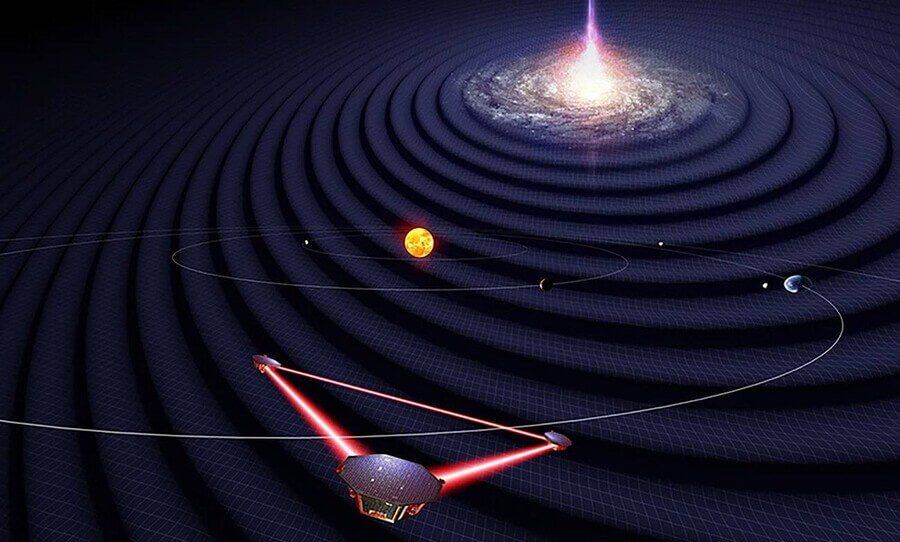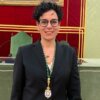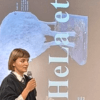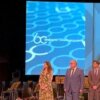
LISA, the first gravitational-wave observatory in space gets go-ahead
The European Space Agency’s Science Programme Committee has approved today the Laser Interferometer Space Antenna (LISA) mission, the first scientific endeavour to detect and study gravitational waves from space. The ICCUB Technology Unit, based in the Barcelona Science Park, will participate actively in the construction of a radiation sensor on board the satellites, and the definition of the distributed data processing center in Barcelona.
ESA recognises through this step, formally called ‘adoption’, that the mission concept and technology are sufficiently advanced, and gives the go-ahead to build the instruments and spacecraft. This work will start in January 2025 once a European industrial contractor has been chosen.
LISA is not just one spacecraft but a constellation of three. They will trail Earth in its orbit around the Sun, forming an exquisitely accurate equilateral triangle in space. Each side of the triangle will be 2.5 million km long (more than six times the Earth-Moon distance), and the spacecraft will exchange laser beams over this distance. The launch of the three spacecraft is planned for 2035, on an Ariane 6 rocket.
LISA is made possible by a collaboration between ESA, NASA, and an international consortium of scientists, the LISA consortium. The Spanish contribution is led by the Institute of Space Sciences (ICE-CSIC) through researchers who are members of the Institute of Space Studies of Catalonia (IEEC–Institut d’Estudis Espacials de Catalunya). The Institute of Cosmos Sciences of the University of Barcelona (ICCUB) and the Universitat Politècnica de Catalunya–BarcelonaTech (UPC) also participate in the mission through researchers who are all affiliated members of the IEEC.
The Spanish contribution focuses on the Science Diagnostics Subsystem (SDS), one of the three main flight subsystems. Its goal is to measure the environmental disturbances on board each satellite in the constellation in order to differentiate them from the effect that gravitational waves would produce. The SDS will have temperature, magnetic field and radiation sensors on each satellite.
Besides the contribution to the LISA instrument, the ICE-CSIC/IEEC will also lead the development of a Spanish Data Distribution Centre together with the necessary algorithms for the science exploitation.
The ICCUB Technology Unit, based in the Barcelona Science Park, will actively participate in the two aforementioned aspects: the instrumentation part, with the construction of a radiation sensor on board the satellites, as well as the definition of the distributed data processing centre in Barcelona.
Bringing ‘sound’ to the cosmic movie
Just over a century ago, the physicist Albert Einstein made the revolutionary prediction that when massive objects accelerate, they shake the fabric of spacetime, producing miniscule ripples known as gravitational waves. Thanks to modern technological developments, it is now possible to detect these most elusive of signals.
LISA will detect, across the entire Universe, the ripples in spacetime caused when huge black holes at the centres of galaxies collide. This will enable scientists to trace the origin of these objects, to chart how they grow to be millions of times more massive than the Sun and to establish the role they play in the evolution of galaxies.
“LISA is an endeavour that has never been tried before. Using laser beams over distances of tens of kilometres, ground-based instrumentation can detect gravitational waves coming from events involving star-sized objects – such as supernova explosions or merging of hyper dense stars and stellar-mass black holes. To expand the frontier of gravitational studies we must go to space,” explains LISA lead project scientist Nora Lützgendorf.
The mission is poised to capture the predicted gravitational ‘ringing’ from the initial moments of our Universe and offer a direct glimpse into the very first seconds after the Big Bang. Additionally, because gravitational waves carry information on the distance of the objects that emitted them, LISA will help researchers measure the change in the expansion of the Universe with a different type of yardstick from the techniques used by the Euclid space mission and other surveys, validating their results.
In our own galaxy, LISA will detect many merging pairs of compact objects like white dwarfs or neutron stars and give us a unique insight into the final stages of the evolution of these systems. By pinpointing their position and distances, LISA will further our grasp of the structure of the Milky Way.
To detect gravitational waves, LISA will use pairs of solid gold-platinum cubes – so called test masses (slightly smaller than Rubik’s cubes), free-floating in special housing at the heart of each spacecraft. Gravitational waves will cause tiny changes in the distances between the masses in the different spacecraft, and the mission will track these variations using laser interferometry.
This technique requires shooting laser beams from one spacecraft to the other and then superimposing their signal to determine changes in the masses’ distances down to a few billionths of a millimetre. The spacecraft must be designed to ensure that nothing, besides the geometry of spacetime itself, affects the movement of the masses, which are in freefall.
The spacecraft follows in the footsteps of its predecessor LISA Pathfinder, which demonstrated that it is possible to keep the test masses in freefall to an astonishing level of precision. The Spanish contribution to LISA Pathfinder, launched in 2015, was also led by ICE-CSIC and IEEC within the Gravitational Astronomy research group of the ICE-CSIC.
» For further information: ICCUB website [+]




